Technology sometimes fails. Most often, laptops stop working in full power if overheating of the internal parts of the device occurs. This can lead to sad consequences. It is important to monitor the condition of the computer, especially if it has served faithfully for several years. The thermal pad for a laptop just serves the main purpose - it improves heat transfer between the chip and the heatsink, which requires constant cooling.
What is this?
Thermal pads are used in laptops, video cards, water cooling systems, power supplies, servers. They increase the heat dissipation of the chipset, computer memory, processor, and other hot parts. A thermal pad for a laptop consists of rubber or silicone, as well as a filler. Most often it is graphite or ceramics. Rubber thermal pads do not last long - only one year, but this also depends on the quality of the rubber. Silicone thermal pads are more resistant and will last much longer - five years. Their service life is directly dependent on the quality of the material.
Today, a replacement for thermal pads has appeared on the market - copper plates. In fact, they cannot perform the functions of the first. The plates are inelastic and do not adhere well to the surface. A quality product must be checked in special laboratories, have certificates for toxicity, environmental friendliness and meet production specifications. The color of the product does not matter, each manufacturer produces established shades. To extend the life of thermal pads, store them in the black bag.
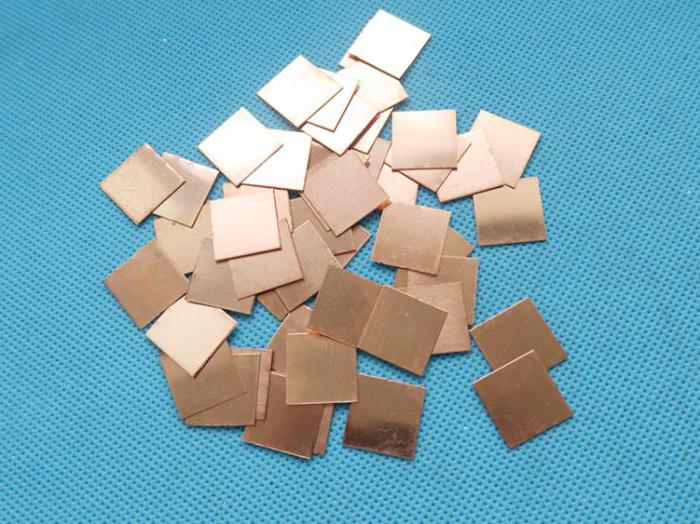
Purpose
The thermal pad cools the parts of the computer operating in high temperature mode. The state of the computer depends on its function. Tracking laptop overheating is easy. Cooling systems, fans become dirty over time, debris clogs in them, the laptop starts to work slowly, turns off spontaneously, the turbine makes a lot of noise, the lower part of the computer heats up faster. These symptoms indicate that the laptop needs cleaning. In addition to cleaning the ventilation and replacing the thermal paste, it is recommended to replace disposable thermal pads. It is forbidden to reuse them by the manufacturer! This can result in the laptop requiring costly repairs.
If the cooling system is clogged, this leads to an increase in temperature inside the case, and then to deformation of the chips, video cards. All this shortens the life of the laptop. Has your computer started to slow down? So reduced clock frequency processor and video chip due to overheating. Please note that if the equipment often turns off on its own, the emergency protection system is triggered. In this case, an urgent replacement of the thermal pad is required. In addition, they have high thermal conductivity, good mechanical properties (solid, able to compress and withstand deformation).
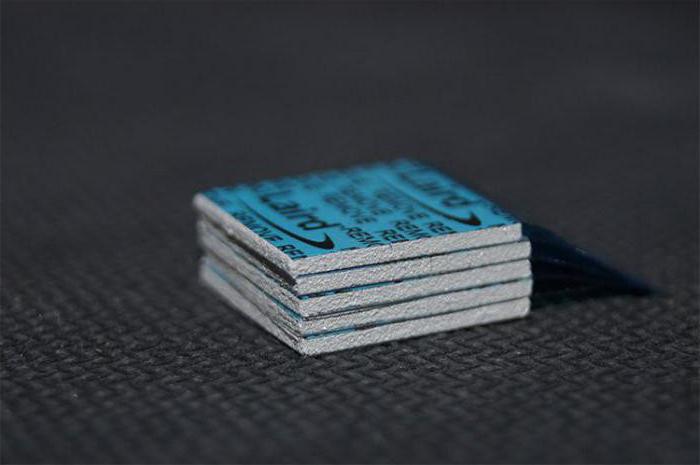
Features and Benefits
The laptop thermal pad helps it to last longer and improve performance. The main advantage of this product is the thickness. It reaches five millimeters, sometimes more, which plays an important role in cooling the system. If there is a large gap between the heatsink and the electronic component, the thermal pad fills it completely. The peculiarity of the gasket is excellent elasticity. Thanks to this property, the cooling system retains its mobility, protecting the chips from temperature deformations. Gaskets, like pastes, are of great importance for a laptop. Even if you are not a professional, occasionally open the back panel and inspect the condition of the internal parts.
How to install
The best thermal pad for a laptop is one that has certification, quality assurance, long term service, securely packaged and is in average price range. It should be thick and elastic enough. Over time, thermal pads lose their elasticity and heat-conducting properties. Its timely replacement is a necessary condition that should occasionally be met. Standard thermal pad on one side has adhesive tape for fastening. Installation is carried out in order:
- Cut the thermal pad to fit the chip.
- Remove the film from the sticky side, if any.
- Stick the product according to the type of roll, starting from one side. Roll out the gasket over the entire surface. There should be no air bubbles between it and the chip.
- If there is another protective film on top, remove it while holding the gasket.
- Install the radiator.
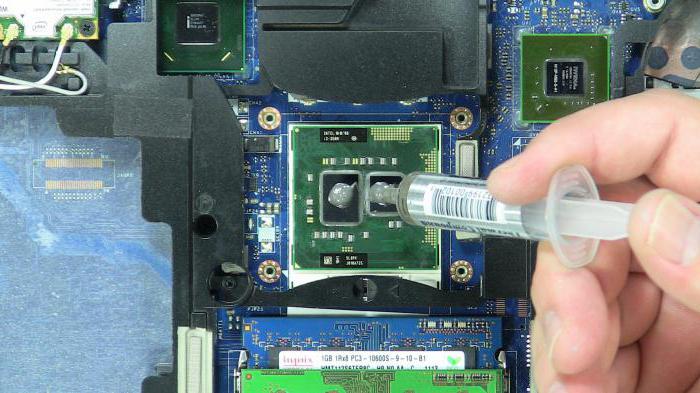
Thickness
When replacing, remember that the thickness of the laptop thermal pad should be 0.5 mm thicker than the previous one. If you do not know which one to choose, stop at the standard thickness. Experts advise making a cast of a crystal from plasticine, which will help determine the correct dimensions. You can use two thin thermal pads instead of one thick one. They need to be installed on top of each other.
What is the price
Thermal pad for a laptop is an inexpensive thing. Its price varies depending on the size, material, manufacturer and place of purchase. The cheapest thermal pads cost 50 rubles. There are copies more expensive - from 250 to 1000 rubles. If you want them to last longer, buy quality thermal pads. Expensive products will help save on future repairs.
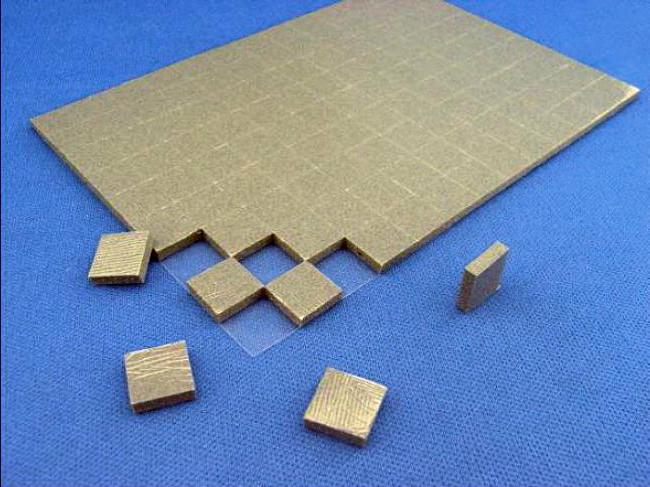
Thermal pad selection
Which is better: thermal paste or thermal pad for laptop? Further repairs and the condition of the equipment depend on this issue. The fact is that thermal paste will not be able to cope with a large amount of work. If a laptop or computer consumes a lot of energy, works at full capacity, it needs proper cooling. Don't know which pad to choose? Experts advise in this case to buy a product with a thickness of one millimeter. This thermal pad is standard, suitable for almost all laptop models.
On the other hand, if you choose a product of two millimeters, it will become denser and will not hang out. It is not recommended to take 0.5 mm thermal pads. Remember, for a laptop, thick thermal pads are the best choice!
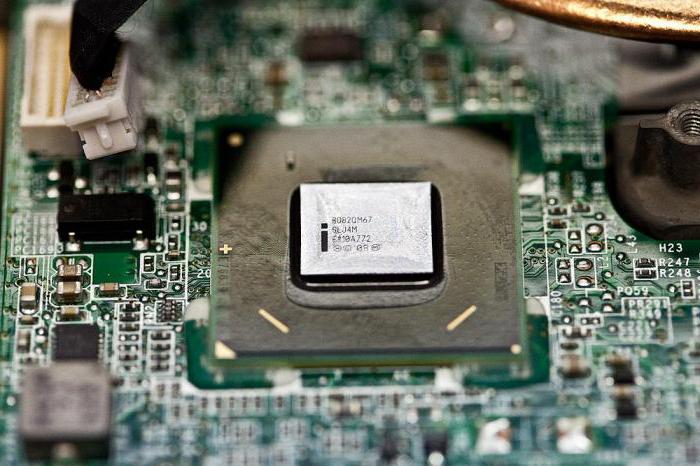
thermal paste
How to replace the thermal pad in a laptop? A good alternative to gaskets is thermal paste. They have a similar base: liquid silicone and essential oil. Thermal paste filler consists of several types of non-conductive. It is important that the thermal paste is fresh. It is easy to determine its quality: if the separation of the oil from the base begins, this means that it can still be used. Mix the compound thoroughly. If the paste is hard, it has lost all its properties.
Many experts do not recommend using thermal paste. It does not provide proper cooling and can even harm equipment if there are large gaps between the processor, video chip, motherboard. Thermal paste is similar in structure to a thin thermal pad. It makes sense to use the first one if the gap is not more than 0.2 mm. Modern thermal pastes consist of high-quality fillers. These are mainly mineral, synthetic oils, microdispersed powders. Good pastes have high thermal conductivity.
Replacing thermal paste is a complex process that requires care. Remember that it cannot be smeared on adjacent tracks, it is applied carefully. Prepare before replacing the right tools. Thermal paste, screwdrivers, old a plastic card, stationery knife, napkin - all this will come in handy during the replacement.
- Remove the battery.
- Open back cover, clean from dust and debris.
- Remove the old thermal paste from the surface of the processor and heatsink with a regular eraser.
- Clean the surface with alcohol and dry.
- Apply a thin layer of thermal paste with a spatula and smooth with a card.
- Assemble the computer in reverse order.
It is not advisable to use paste and gasket at the same time.
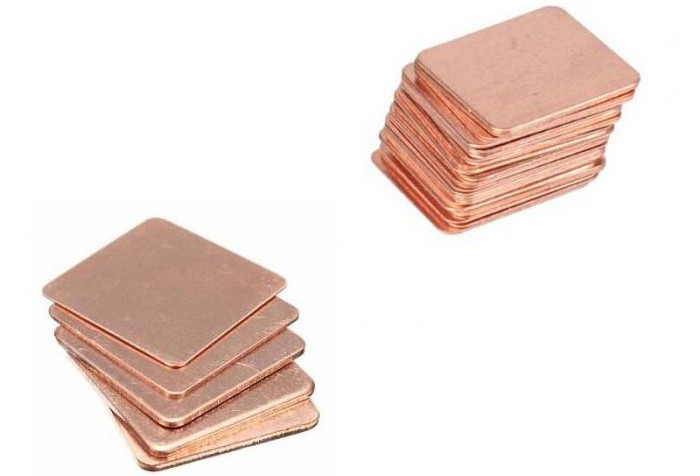
How to do it yourself
If you need it urgently, you can replace the thermal pad for the laptop with your own hands, but this is a temporary solution. As a material, you can use a regular medical bandage. Fold it in several layers, a good thickness is five. For this option, you will need thermal paste. It will serve as the basis for future laying. After the bandage of the desired size is folded, dip it in thermal paste. Do not lubricate heavily, otherwise the material will spread. Don't worry if the homemade spacer is a different size and extends beyond the video chip or processor die. She will briefly cope with the cooling of the computer. The only thing you can count on is surfing the net. Videos and games will load slowly.
July 13, 2017
Overheating of internal parts is dangerous for any equipment. This is especially true for PCs and laptops, in which processors and video cards are often covered with special thermal paste. Thermal pads are often installed. They fill the space between the cooler heatsink and the chip, which also helps improve heat transfer. At the same time, many users have a question: “Which is better - thermal paste or thermal pad?”. Let's try to figure this out.
Let's talk about thermal paste first. It is a multicomponent dense (sticky and plastic) substance with high thermal conductivity. It consists of various synthetic or mineral oils, metal powders, oxides, etc. Thermal grease is the most common material that is used to properly cool electronics.
As for the functions of thermal paste, they are as follows:
- Filling the void between the processor / video card and the cooler heatsink (due to which an important part may overheat);
- Providing heat transfer from the processor to the cooling system.
The disadvantage of thermal paste is that during operation it dries out and loses its properties. Therefore, it is advisable to replace it for prevention purposes at least once every 6-12 months. Unfortunately, many users ignore this. As a result, their PC or laptop fails due to overheating.
However, despite all this, manufacturers computer technology continue to actively use thermal paste to protect processors and video cards from overheating. Although now there are many other thermal interfaces. For example, the most popular alternative to thermal paste is thermal pad.
What is a thermal pad?
![]()
On the Internet, you can find a variety of names for this thermal interface - thermal chewing gum, chewing gum, hot melt adhesive, thermal rubber, etc. Thermal pads are also used to cool important PC parts that are characterized by high temperature operation. What does she represent? In fact, it is a thin elastic sheet consisting of a base and a filler (graphite or ceramic).
At the same time, the modern market offers several types of thermal pads at once. They differ from each other as follows:
- thermal conductivity;
- Thickness (as a rule, it varies from 0.5 mm to 5 mm);
- “Design” (we are talking about the fact that the thermal pad can be single-layer or two-layer, and also have one or two adhesive surfaces);
- Material (rubber, silicone, copper, ceramics, aluminum; there are also home-made options - for example, from a bandage impregnated with thermal paste).
So if you decide to put a thermal pad or just change the old one to a new one, then be sure to take into account its thickness, thermal conductivity coefficient, and other characteristics.
Also pay attention to the production date. If the thermal pad was released more than a year ago, then you should not use it.
What to choose?
Let's try to answer the question, which is better for a laptop or PC? Thermal paste or thermal pad? Let's go through the points:
- Let's start with the fact that in terms of its effectiveness, thermal pad is inferior to paste if the distance between the part and the cooling system is minimal. For example, literally 0.2-0.3 mm. If the distance is close to 1 mm, then thermal paste cannot be used. Otherwise, overheating is guaranteed.
- The thermal pad shows itself well if it is used in devices where the chip and heatsink seats are farther apart (more than 0.5 mm). After all, if you take thermal paste here, then there will be no sense from it. Due to the thick layer, a very low heat dissipation rate will appear. The processor or video card will start to get very hot.
- Replacing a thermal pad is often easier than applying new thermal paste, which requires both cleaning of the old paste, a thin even layer, and even special tools. However, replacing the thermal pad on a processor or video card is not always easy. It is necessary to choose the right size for it, take into account the thickness, compression ratio (should not be more than 70%, otherwise, due to severe deformation, it will lose most of its heat-conducting properties) and many others. others
- Price. This criterion will not allow us to determine which is better. Since the cost of thermal paste and thermal pads is about the same. The cheapest options for such thermal interfaces will cost you 100-150 rubles. However, we do not recommend saving. It is advisable to choose products whose cost exceeds 300 rubles.
- Life time. A lot depends on the quality of the thermal paste or thermal pad. Although on average the latter serves a little more. True, if for some reason you need to remove the cooler heatsink from the video card or chip, then you will have to change both the thermal paste and the thermal pad.
- On average, in terms of thermal conductivity, thermal pads are inferior to thermal pastes, the best samples of which have indicators at the level of 8-10 W / mK. Thermal pads cannot have such values. They have a lower thermal conductivity. On the other hand, there are thermal pastes with a thermal conductivity of 1-2 W / mK. In most cases, they will already be inferior to thermal pads.
It turns out that each option has its pros and cons. Therefore, it is impossible to say unequivocally which is better and which is worse. Experts recommend the following:
- For laptops and netbooks, use a thermal pad. They argue that the processor and video chip of such devices heat up more. In addition, a laptop or netbook basically does not stand in one place. They take him with them to work, study or visit, which means that he is often shaken. In such conditions, a good and high-quality thermal pad will be more practical and reliable. Therefore, it is better to choose it instead of thermal paste.
- PC owners prefer thermal paste. Indeed, on most models, the gap between the processor and the cooler heatsink is minimal. It is difficult to place even a thin aluminum or copper plate here.
Remember! If you change the thermal interface yourself (for the same laptop), then the thickness of the new thermal pad should be slightly larger (about half a centimeter) than the previous one. The fact is that during operation it shrinks a little. In addition, if you are not sure how thick the thermal pad will be for your PC or laptop model, then take 1 mm. This is the most common and standard gap between the heatsink and the chip in many devices from various manufacturers.
Can thermal paste be replaced with thermal pad (and vice versa)?
Theoretically, replacing thermal paste with a thermal pad is possible. However, in practice this is not always recommended. This is explained by the fact that in most cases, replacing thermal paste with a thermal pad and vice versa leads to an increase in the temperature of the processor or video card. Why? Let's break it down with a few examples:
- If you remove the thermal pad and apply paste instead, the cooler heatsink will most likely no longer fit snugly against the CPU or GPU. The fact is that most thermal pads are much thicker than the allowable layer of thermal paste. Air will begin to enter this free space, which does not conduct heat well, contributing to overheating of the device.
- If, on the contrary, a thermal pad is installed instead of thermal paste, then the pressure on the springs and bolts that hold the entire structure of the cooling system will increase. From which it can completely fail or work unstably.
Therefore, changing thermal paste to thermal pad or vice versa is not recommended. Use the same thermal interface that was previously. That is, if the manufacturer applied thermal paste between the processor and the cooler, do the same, giving preference to this heat-conducting substance. It's not worth the risk.
Also, do not forget that it is forbidden to apply thermal paste to the thermal pad or vice versa. Such a "neighborhood" will only have a negative impact and worsen thermal conductivity. What does it threaten? Failure of the video card, breakdown motherboard or processor.
- We already wrote above that if you are not sure which gasket to take for your processor or video card model, then give preference to a product with a thickness of 1 mm. This is the standard gap between the chip and the cooler heatsink on most devices.
- It is also not scary if the thermal pad is thicker. For example, 2 mm instead of 0.5 mm. But only on condition that as fastening bolts that press the radiator strongly enough. The result will be the same 0.5 mm at the junction. So if we are talking about replacing the thermal pad, it is better to take thicker than thinner.
- In no case should you save both when choosing thermal paste and gaskets. Too much depends on this material. In addition, due to the use of low-quality thermal interfaces, you can “get” to repair or replace expensive components.
- Despite the good thermal conductivity of copper gaskets, they must be used carefully. The fact is that copper is not ductile and flexible. Therefore, if the surface of the radiator is uneven, then a gap may appear between it and the processor or video card, into which air will enter. All this will lead to excessive heating of the part.
Why are such devices needed? The fact is that the surface of the processor or heatsink cannot be completely flat. If you place the heatsink directly on top of the processor, there will be tiny, almost imperceptible gaps between them. And since air is a poor conductor of heat, these gaps will have an extremely negative effect on the cooling of the entire system.
Which is better to use: thermal paste or thermal pad?
For this reason, an intermediate material with high thermal conductivity is required, which can fill these gaps and establish heat transfer. This material can be a thermal pad or thermal paste. But which one to choose? What is the difference between them, what are the advantages and disadvantages? Which option is best for a laptop? Our article will help you figure this out.
Thermal paste, or thermal paste, is a sticky substance that is applied directly to the heatsink or processor itself to ensure a snug fit. Thermal paste is the most commonly used material to properly cool electronics. To do its job, the thermal paste must be good quality. It takes some skill to properly apply this substance, as it gets very dirty.
For proper application, it is common to squeeze a pea-sized amount of paste directly onto the central area of the processor. Then it is evenly distributed over the entire surface, using a flat object for this: for example, a plastic card. The layer should be thin enough to fill possible gaps, but not create an additional barrier between the processor and the heatsink.
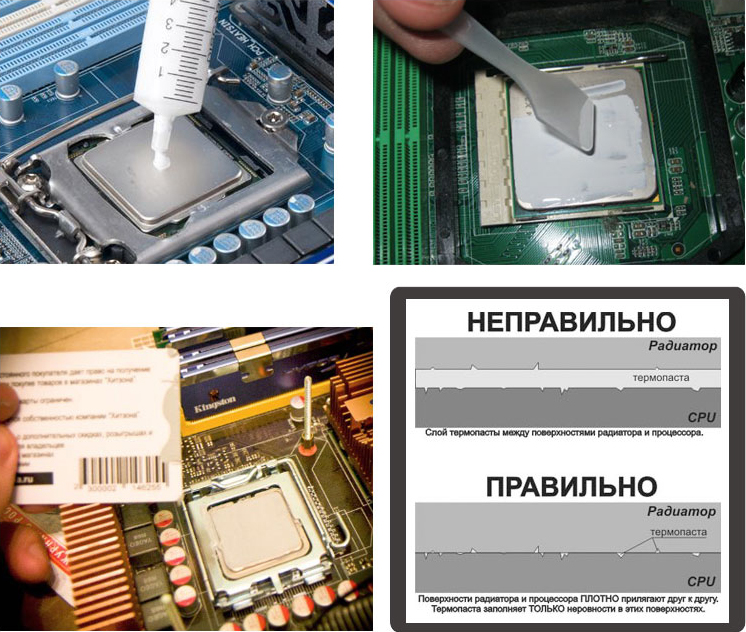
What is a thermal pad
The main advantage of this element is the ease of installation. Unfortunately, thermal pads are not as effective as thermal paste, which can be applied in a thin layer and get the desired result. Some CPU fans come pre-packaged with thermal pads because they are easy to install, don't require extra manipulation or mess, and still provide the performance you need. But, unfortunately, these items are disposable.
If you ever need to remove the heatsink from where it was once installed, the thermal pad will need to be replaced. This happens because the surface of the thermal pad during contact with the processor is broken and becomes uneven. Thus, if you try to install it again, there will be gaps between the two surfaces. As already mentioned, this negatively affects thermal conductivity and can disrupt the processor. Therefore, it is worth remembering: if you remove the radiator, the thermal pad should be completely removed and replaced with a new one.
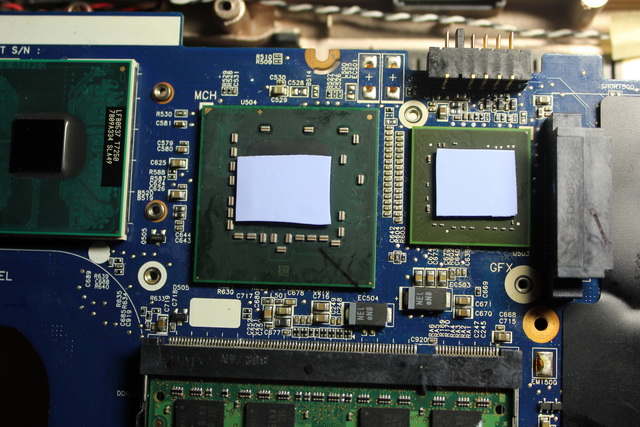
Also, do not use multiple thermal pads together. Two or more spacers between the processor and heatsink instead of cooling will have the opposite effect and damage the processor very quickly. This is especially true for laptop processors that heat up quickly.
Replacing the Thermal Pad with Thermal Grease
Technically, replacement is possible, but it is not always recommended. In most cases, such a replacement will lead to an increase in processor temperature. Why is this happening? The fact is that the thermal pad not only provides thermal conductivity, but also has a certain effect on the springs and bolts that hold the entire processor cooling structure.
If you remove the gasket and apply paste instead, the heatsink will not fit as tightly to the processor as before, since an element of a certain thickness has been removed from the established system. In addition, the rotation of the fan can have some effect on the processor due to the resulting gap, causing friction. Therefore, you can replace one element with another only at your own peril and risk.
ADVICE. However, in Lately the production of special types of thermal paste, which is used instead of thermal pads, began. It is denser and more viscous, can fill large gaps, in addition, it has improved thermal conductivity. Pay attention to the K5-PRO brand thermal paste, it is made for iMac computers, but also suitable for other computers.
Thermal paste and thermal pad: applying one to the other
Such an action does not make sense and can only worsen thermal conductivity. Applying paste to the gasket under certain conditions can seriously interfere with the transfer of heat from the processor. Therefore, it is better not to experiment, and instead choose only one option.
Laptop option
You should start with the fact that both pads and paste are of poor and good quality. Undoubtedly, good quality thermal paste will outperform bad thermal pads, and vice versa.
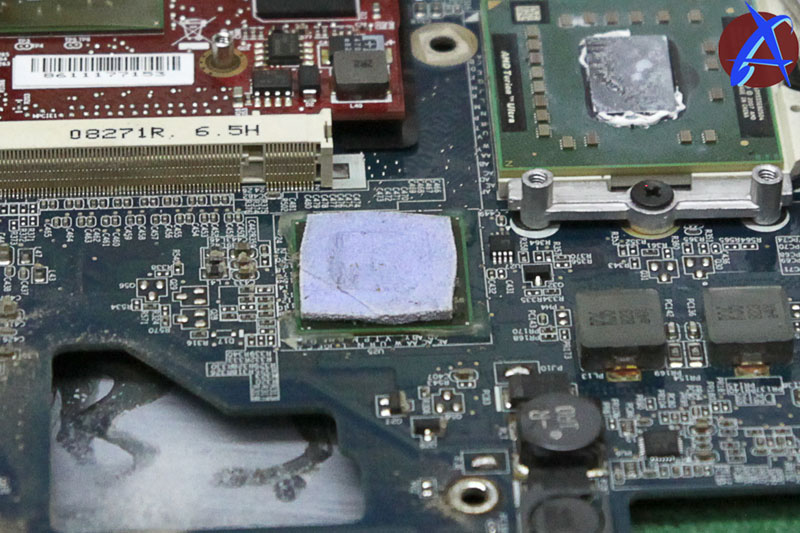
But if we consider the situation with elements of the same quality, then it is recommended to use a thermal pad for a laptop. The fact is that the heating of the laptop processor is quite strong, in addition, this device is constantly subjected to shaking when moving from place to place. A good thermal pad will be more stable in these conditions and it is better to choose it over thermal paste.
Thermal paste and thermal pads: disadvantages and advantages
Let's start with thermal pads. So what benefits do they have?
- Easy to use.
- They can be cut in different sizes and shapes.
- Do not get dirty, easy to install.
- They don't dry out.
- Manufactured from various materials according to specification.
Flaws:
- High production cost.
- One time use.
So, at first glance, thermal pads have many advantages. Different in shape, you can quickly install a new one instead of the old one, easy to install. The variety of materials from which they are made allows you to choose the most preferred material in terms of electrical, thermal, chemical or physical use.
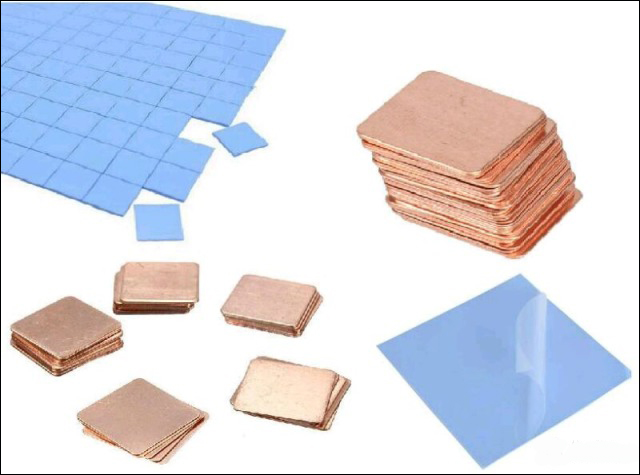
However, their price can be quite high. Most often, in the production of components, thermal pads are installed manually, which immediately increases the cost of the final product.
Now consider the characteristics of thermal paste. Advantages:
- Reliability.
- Cheapness.
- High-quality elimination of gaps.
- Only a thin layer is required.
Flaws:
- It smudges when applied.
- Dries out.
- Sufficient pressure required.
Let's summarize. Thermal pads are a good option, especially for laptops, but you need to be careful when choosing them. Better take good thermal paste instead of cheap low-quality thermal pads. Also, when choosing the latter, you can focus on the type and quality of the material. This gives additional opportunity control over your system.
ADVICE. If price is a significant consideration for you, it is better to opt for thermal paste. You only need to apply a thin layer to achieve good thermal conductivity. Moreover, the thinner this layer is, the better the thermal conductivity will be. Thermal pads are almost always much thicker than the required layer of thermal paste.
Also, thermal paste is much better at leveling surfaces. Since it is a viscous substance, this substance is able to fill both the smallest gaps and fairly large irregularities. It copes with this task much better than thermal pads, which do not have the ability to "flow" into all the recesses. If the surface of your components or heatsink has significant irregularities, it is better to give preference to thermal paste.
Once you've made your choice, it's a good idea to install a component temperature monitoring program and monitor the performance for a while to make sure you've made the right choice.
Many users have faced the problem of overheating in their computers, and if stationary machines can be equipped with additional cooling, then laptops do not have this advantage. A year or a half after purchase, they begin to overheat, and the cooling pad does not help either. What's the matter? It's simple: it's time to change the thermal interface.
Purpose
Any thermal interface is designed to transfer heat between two objects, it must have low thermal resistance and high thermal conductivity, as well as zero electrical conductivity, low fluidity and the ability to maintain its properties at temperatures close to 100 degrees Celsius. Which is better, thermal paste or thermal pad? The thing is that they have different purposes.
Common types
For quite a long time, the only thermal interface was thermal paste, familiar, perhaps, to everyone. This viscous composition in the form of a cream (paste) that does not conduct current has been and is used for all computer parts that need cooling: video cards, chipsets and radiators. Over time, other thermal interfaces appeared: thermal pads, hot melt adhesive, and even liquid metal, which causes a lot of confusion. Each type of thermal interface has its own characteristics, so even the common question of which is better - thermal paste or thermal pad, can be solved by the user himself, because they simply have different purposes.

thermal pad
On the Internet, there are other names for this type of thermal interface: thermal chewing gum, chewing gum, thermal rubber. Their main task is to fill the space above 0.5 mm. Copper plates have appeared on the modern market, which supposedly can replace thermal pads, but this is not the case: copper is inelastic and cannot guarantee a uniform fit over the entire surface. In addition, the surface of the chip and the sole of the heatsink, although polished, still have some irregularities, and in addition to simply filling the gap between the parts, it is necessary to smooth out the roughness and small irregularities: this function is performed by a paste or thermal pad.
What to choose as an alternative? If, nevertheless, it is decided to use a copper plate, it must be well sanded and adjusted, therefore, when buying, it is better to take a sheet a little thicker than necessary. The use of a thin layer of thermal paste on both sides is also necessary to fill microcracks.
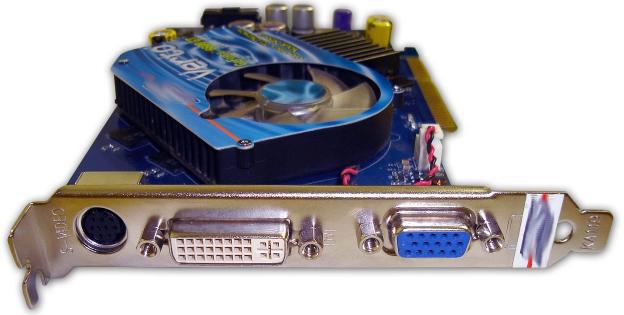
Thermal gum features
Sometimes you can come across the statement that a thermal chewing gum is used for gluing, fastening two parts, if there are no other methods. This is a misconception, because in such cases hot glue is used. Thermal chewing gum, as a rule, is used for the processor power mosfet, as well as for memory chips on video cards and motherboards.
You can also "put" it on it, and due to the fact that the temperature of this part increases evenly, without jumps, and in general it is not as high as on the processor, so the question of which is better - thermal paste or thermal pad, is incorrect here: paste will not be able to perform the same functions.
hot glue
This term refers to a special composition that does not conduct electricity. He possesses high rate thermal conductivity and serves to attach small radiators to the video card, the processor power subsystem, and so on. Hot melt adhesive does not dry for a long time, but it cannot always provide high-quality fastening, and its thermal conductivity, in comparison with other types of thermal interface, is much lower, which is quite logical, given that this product has a different purpose. It is recommended to use it only if it is impossible to attach the heatsink sole to the processor with anything else.
Liquid metal
Another type of thermal interface, which, by the way, has an excellent electrical conductivity, because it consists mainly of metal. Nevertheless, it is very popular among enthusiasts, because liquid metal has much higher thermal conductivity and thermal resistance than any other thermal interface. Before applying the thermal distribution cover of the processor and the sole of the radiator must be degreased, after which the liquid metal can be rubbed. The layer must be very thin. It should be rubbed until the composition ceases to be fluid.
This interface is the most effective, but it is extremely inconvenient to apply and remove. Before use, make sure that the base of the cooler is copper or nickel-plated, as the liquid metal reacts with aluminum alloys.
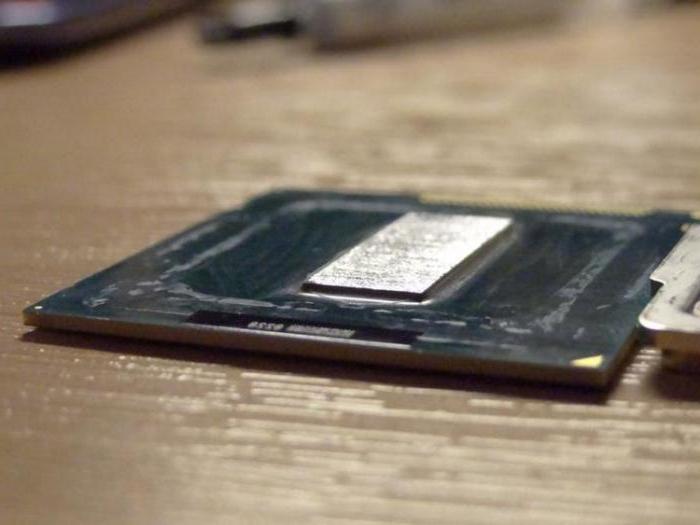
Replacing the thermal interface
When buying a new thermal paste, you should first of all pay attention to its consistency: it should not be either too liquid or too thick, because in the first case there will be no necessary contact, and in the second it will not be possible to apply the composition in an even thin layer. Computer wizards most often use MX-4 or KPT-8 thermal paste.
However, the first step is to remove the old composition. If the last change was made more than a year ago, it is necessary to separate the radiator very carefully, because if the paste or thermal pad has dried up, with careless handling, you can simply “uproot” all the details.
In laptops
Particular care should be taken when replacing the thermal interface in laptops, starting from the disassembly stage. The fact is that the processor crystal there is not protected by metal and is very sensitive to damage. If the previous thermal paste had an admixture of aluminum shavings, you must avoid getting it on other parts, because this can cause a short circuit.
In no case should you use silicone thermal paste, as it has a very low heat dissipation rate and, moreover, dries very quickly. Such a paste needs to be changed much more often, otherwise the device may break due to constant overheating.
Which is better - thermal paste or Usually in compact computers, all parts are tightly fitted to each other, so there is no need to use thermal pads, but before making a choice, you need to check the gaps.
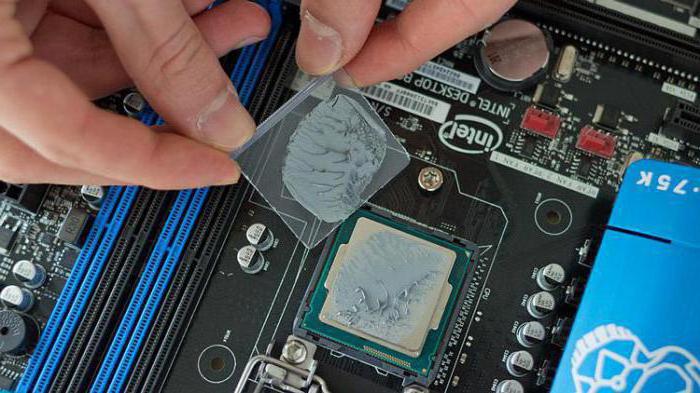
Correct application
When applying thermal paste, it must be remembered that the composition must lie in a thin, uniform layer, without gaps and bubbles. The amount of paste, according to the advice of computer masters, should be slightly more than a match head. Here, more does not mean better. The thermal interface should be distributed over the surface with a special spatula, and it should be applied only to the heat-distributing cover of the processor.
A good thermal paste is changed every two or three years, a bad one - once a year, but it still needs to be changed, even if the expected service life has not yet come to an end. In stationary computers, you do not need to remove the heatsink during cleaning, so the thermal interface does not suffer, but the masters still say (regardless of whether there is a thermal pad or thermal paste) that it is better to replace it at the same time.
Thermal pad change
Which is better, thermal paste or thermal pad? For a video card, the answer is unequivocal: there are two options. In order to substantiate the answer, it is not necessary to contact a computer wizard, it is enough just to know the gap between the two parts. In the case of a video card heatsink, this is usually just over 0.5 mm.
To install a thermal pad, you need to cut out the desired piece, the size of which matches the chip or slightly exceeds it. Then remove the film from the surface of the thermal pad. Roll a piece into a roll or bend and start laying from one of the edges to prevent air from entering (reminiscent of the process of gluing a protective film to the screen of a phone or tablet). After that, it is necessary to separate the second, ribbed film from the thermal pad. The process is completed, you can install the radiator.
Without knowing the parameters
Many manufacturers say that it is better to use paste or thermal pads from the same companies that they used, but such a moment as the gap between the heat-distributing cover and the radiator cannot be found in the description specifications computer, so there is an instruction on how to replace the thermal interface without knowing the thickness.
First, following the instructions above, you need to install a 0.5 mm thick gasket and attach the heatsink, then unscrew and remove it again to check if the thermal pad is pressed. If there is a deformation area, then everything is in order, and you can simply put the radiator back.
If there is no pressing, it is necessary to cut another piece of the thermal pad of the same size and install it in the same way on top of the first one, then reattach the heatsink and remove it to check the degree of pressing. Repeat this process until a deformation area appears.
If the instructions are followed, then the total thermal conductivity of two or more thermal pads will be no worse than one.

DIY
For a long time in the public domain in almost every computer store there is a wide variety of goods. There can be purchased either hot glue, or thermal pad, or thermal paste. Which is better - buy or do it by hand? The fact is that a home-made thermal pad can be made from ordinary thermal paste and a medical bandage.
The cost of "chewing gum" is relatively low, given the long service life, but sometimes it happens that there is no opportunity to purchase it. To make it yourself, you will need a medical bandage (the finer the mesh, the better) and thermal paste (it is advisable to take two, viscous and liquid). The second option: a plate of copper or aluminum and a polishing material for them.
To begin with, you should cut out a piece of bandage that is suitable in size with a margin of 3-5 mm. Lubricate the cut pieces with thermal paste. This should be done carefully so as not to damage the fibers of the bandage. Such a "grid" gives the thermal paste rigidity, and it will not spread even with strong heat, although heat transfer suffers slightly from the use of a bandage. Before applying new gaskets to parts, lubricate them with a thin layer of thermal paste to facilitate installation. Then cut off all excess with scissors and tamp with a thin screwdriver.
Instead of bandages, you can use copper or aluminum. To do this, using metal scissors, cut metal plates, polish them well and install them in the same way, after removing the remnants of old gaskets and lubricating the surface of the chips with a thin layer of thermal paste. User tests show that it gives a gain of three degrees compared to aluminum, and five degrees compared to bandages. Factory thermal pads lose ten degrees to a properly installed copper plate, but be aware that, as a rule, these products are not the best.
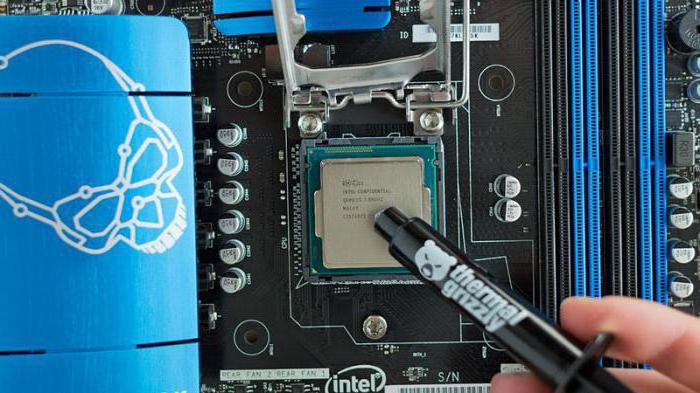
Final Choice
Many manufacturers now sin by using thermal gum instead of thermal paste on all parts that require a thermal interface. Yes, it is the gasket that is much easier to install, so they can be understood: production optimization and the like. Which is better, thermal paste or thermal pad? For the processor, the latter is not the best option, especially when it comes to laptops, because the thermal conductivity of the "gum" is lower than that of the paste, and the distance between the processor and the heatsink sole is very small. Since a thermal pad is typically around 0.5mm thick, under this much compression it will warp and lose most of its properties. The maximum allowable compression ratio is 70%.
Having found out the purpose of each type of thermal interface, you can easily understand whether a paste or a thermal pad is needed. Which is better to choose depends only on the functionality.




